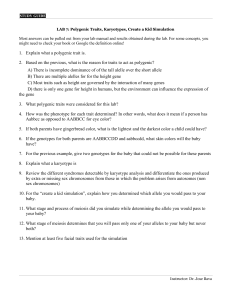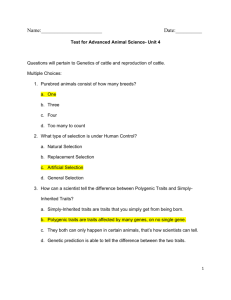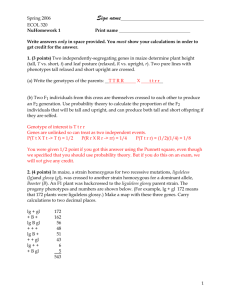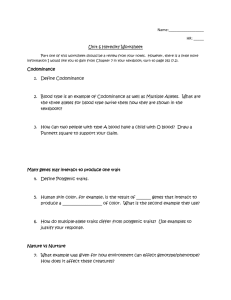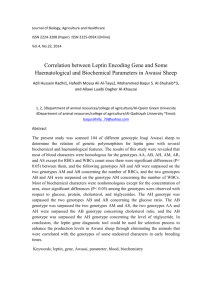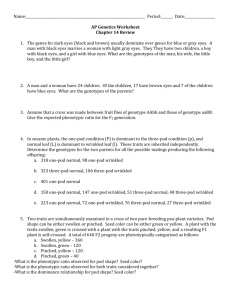Cross-pollination lab
advertisement
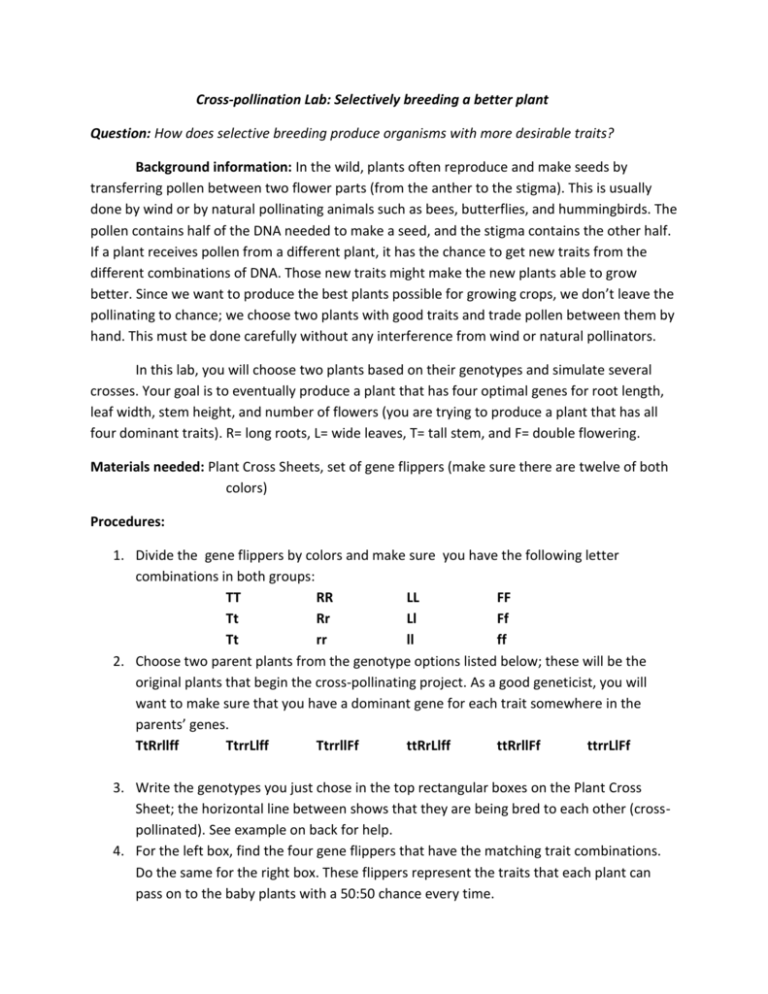
Cross-pollination Lab: Selectively breeding a better plant Question: How does selective breeding produce organisms with more desirable traits? Background information: In the wild, plants often reproduce and make seeds by transferring pollen between two flower parts (from the anther to the stigma). This is usually done by wind or by natural pollinating animals such as bees, butterflies, and hummingbirds. The pollen contains half of the DNA needed to make a seed, and the stigma contains the other half. If a plant receives pollen from a different plant, it has the chance to get new traits from the different combinations of DNA. Those new traits might make the new plants able to grow better. Since we want to produce the best plants possible for growing crops, we don’t leave the pollinating to chance; we choose two plants with good traits and trade pollen between them by hand. This must be done carefully without any interference from wind or natural pollinators. In this lab, you will choose two plants based on their genotypes and simulate several crosses. Your goal is to eventually produce a plant that has four optimal genes for root length, leaf width, stem height, and number of flowers (you are trying to produce a plant that has all four dominant traits). R= long roots, L= wide leaves, T= tall stem, and F= double flowering. Materials needed: Plant Cross Sheets, set of gene flippers (make sure there are twelve of both colors) Procedures: 1. Divide the gene flippers by colors and make sure you have the following letter combinations in both groups: TT RR LL FF Tt Rr Ll Ff Tt rr ll ff 2. Choose two parent plants from the genotype options listed below; these will be the original plants that begin the cross-pollinating project. As a good geneticist, you will want to make sure that you have a dominant gene for each trait somewhere in the parents’ genes. TtRrllff TtrrLlff TtrrllFf ttRrLlff ttRrllFf ttrrLlFf 3. Write the genotypes you just chose in the top rectangular boxes on the Plant Cross Sheet; the horizontal line between shows that they are being bred to each other (crosspollinated). See example on back for help. 4. For the left box, find the four gene flippers that have the matching trait combinations. Do the same for the right box. These flippers represent the traits that each plant can pass on to the baby plants with a 50:50 chance every time. 5. Now it’s time to flip genes! Flip the eight pieces that you found in step 4 above. Record the genotype that resulted in the left oval. This is the first baby plant of that generation (the ovals and diagonal lines represent offspring). See example below for help. 6. Repeat step 5 and write the resulting genotype in the right oval. This is the other baby plant of that generation. This is the F1 generation. See example below for help. 7. Now you need to pick two of the four plants you would like to cross-pollinate in the next step. Be sure to pick plants that will give you the best chances of dominate genes in the offspring. Draw dotted lines from these two plants down to the next two rectangular boxes and write their genotype combinations in the boxes. See example below for help. 8. Repeat steps 4-7 on the Plant Cross Sheet, continually choosing the best parent plants to get the most dominant genes. You may choose any two plants from past crosses to breed in the new crosses, and plants may be chosen many times if needed. You are finished when you have produced a baby plant with four dominant traits (at least one capital letter for each trait). Example: The cross below is just to give you an idea of where to write the genotypes and how to take genotypes down to the next level of breeding. Do not copy this example; it uses genotypes that are not available in your lab! ttrrLlff ttRrllff TtRrllFf F1 generation TtRrllFf ?????? ttrrLlFf ttrrLlFf F2 generation ?????? Plant Cross Sheet Engineers:___________________________ #1 F1 generation F2 generation F3 generation F4 generation F5 generation F6 generation F7 generation F8 generation F9 generation F10 generation

